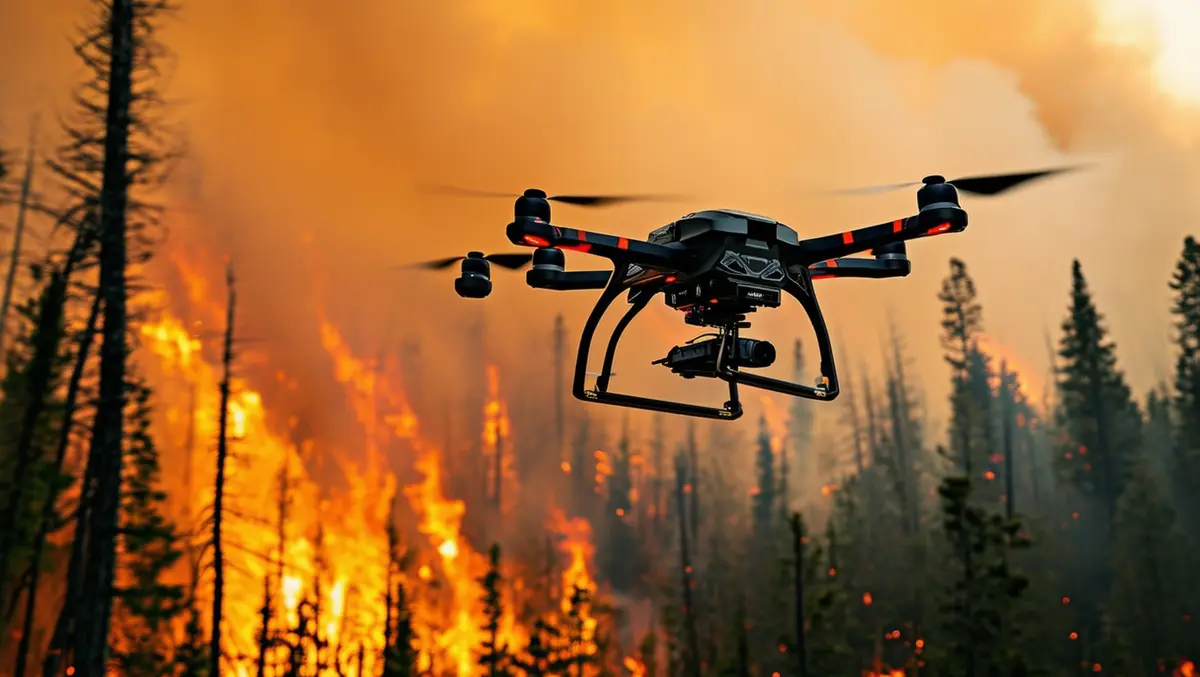
Australian drone tech helps Quebec tackle bushfires in 2023
Australian drone technology is being utilised by Quebec firefighters to tackle the devastating bushfire season in Canada.
The equipment, developed by Sydney-based company Carbonix, aims to address the challenges posed by 'zombie fires,' which are remnants of last year's wildfires that can reignite under the ice.
Last year, Canada experienced its most severe bushfire season on record, with 45.7 million acres scorched. This year threatens to be just as bad, with massive blazes already affecting regions such as the Canadian Rockies, where 30 percent of the town of Jasper has been consumed by flames reaching up to 100 meters.
Carbonix's Volanti, an advanced all-electric fixed-wing uncrewed aerial system (UAS), has been deployed to conduct rapid aerial surveys in the affected areas. The drone is equipped with various payload sensors, including photogrammetry, infrared with radiometric data, intelligence, surveillance, and reconnaissance (ISR), and multi-spectral capabilities. The Volanti recently became the first Australian fixed-wing vertical take-off and landing (VTOL) drone to execute a fully automated Beyond Visual Line of Sight (BVLOS) mission, gathering commercially valuable data for a customer.
The Volanti's integration into Quebec's firefighting efforts is facilitated by Exo Drone, a Quebec-based specialist drone operator, along with support from US-based ArgenTech Solutions, a leader in UAS fire monitoring.
Carbonix's UAS has undergone extensive testing in bushfire zones through a five-year project led by the ANU-Optus Bushfire Research Centre of Excellence and the ACT Rural Fire Service. These tests showed that the UAS was particularly effective in identifying wildfires caused by lightning strikes, which can lead to uncontrollable fires if not detected early.
Philip van der Burg, CEO of Carbonix, expressed the company's commitment to aiding firefighting efforts in Canada. "Our technology is doing a job that is usually done by firefighting crews on the ground or in helicopters, at huge expense, with environmental impact, and at significant risk to human life," he said. "The aim is for these fires to be spotted in their infancy and contained before they become the mega blazes."
The collaboration between Carbonix, Exo Drone, and ArgenTech Solutions aims to survey, map, and analyse active wildfires across Canada. They are integrating advanced sensors and technologies, including an Automated Flight Following module, which allows the UAS to be flown during the day alongside crewed aircraft instead of solely at night.
Brian Veroneau, CEO of ArgenTech Solutions, remarked on the importance of these partnerships. "We're very pleased with the work we've been able to accomplish in Canada," he stated. "Our collective goal is to bring our end-to-end solutions to the rest of Canada to support the wildland fire suppression and monitoring efforts countrywide."
Jean-Francois Pominville, Executive Manager at Exo Drone, emphasised the significance of the partnership for the company's expansion strategy. "They have assembled the best team of knowledgeable, dedicated, and creative people to provide custom integration and engineering services, combined with the best performing aircraft available," he commented. "We couldn't be more satisfied and prouder to have them at our side in our operations as integrated business partners."
Carbonix estimates that replacing conventional crewed aircraft or ground crews with Volanti drones could result in up to 80 percent reduction in operating costs and up to 98 percent reduction in CO2 output, while also improving safety and efficiency.


